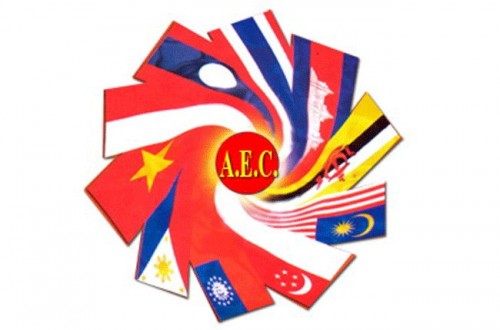
THE Chairman’s Statement during the last Asean Summit (April 2017) drew a bright picture of future Asean economic growth prospects. “Asean’s combined GDP stood at $2.55 trillion in the first half of 2016, with a robust year-on-year real GDP growth rate of 4.7 percent despite the challenging global environment
The region’s economic growth is expected to accelerate to 4.8 percent in 2017, supported by solid growth of private consumption and investment as well as expansionary fiscal policy. While merchandise trade remained resilient at $1.06 trillion in the first half of 2016, only 24.02 percent was intra-Asean. Asean attracted a total of $52.94 billion foreign direct investment inflows in the first half of 2016, of which 24.36 percent was intra-Asean. While noting the region’s bright economic growth and prospects, the Summit recognized that there was a need to redouble efforts to increase intra-regional trade and investment. The Asean heads of state/government therefore reaffirmed their commitment to implement the AEC Blueprint 2025.
Proposed PFI positions on the AEC
Innovation agenda
The forging of a common commitment among Asean leaders to enhance intra-Asean trade and investments can only be welcomed.
It is commendable that the Philippine chairmanship has chosen as overall thematic priority “inclusive, innovation-led growth” for the AEC pursued through the three strategic measures of increasing trade and investment, integrating micro, small, and medium enterprises in the digital economy, and developing an innovation-led economy. It addresses the needs of the member-countries, particularly the Philippines, in order to benefit substantially from the AEC. The public and private sectors should join hands in promoting and implementing the key messages of the Asean 2017 Business and Investment Program of “promotion and globalization of MSMEs, innovation-led growth, women entrepreneurship, and strengthened campaign for youth entrepreneurship.
The competitive environment of the AEC strategically requires the MSMEs to enhance their productivity and address the issues and challenges the MSMEs will be facing in the next decade. Filipinos must be encouraged to invest in their own businesses and become successful innovative entrepreneurs.
Technology and innovation are considered engines of growth in the stimulation of new industries. The Philippine hosting of Asean 2017 should showcase the rise of innovation and start-up ecosystem in the country and the region. It could be a platform for the creation of an Asean chain of values, exchange of knowledge, and cross-border investments. The success of the Summit must be partly gauged by its advancement of policies that support and accelerate the innovation agenda.
Gender equality and women’s empowerment are notably integral principles in the ASEAN Community building process. The Philippines ranks seventh most gender-equal nation in the world and 21st in women’s economic participation and opportunity. The leadership of the women of the Philippines should be encouraged in showcasing the crucial role women play in realizing the goal of the AEC.
The Philippines wisely supports the network of young entrepreneurs capturing the fast-paced developments in key sectors such as food, agriculture, IT, BPO and Internet of Things through the Asean Young Entrepreneurs Association.
Connectivity
There is a need for stronger connectivity to support the AEC through a more efficient movement of goods and services. The Asean Connectivity Master Plan should continue improving the physical, institutional, and people-to-people connectivity within the region.
The Philippines during its chairmanship should initiate the revitalization of the BIMP-EAGA. This should enhance the focus areas of the four member countries and the eight clusters of BIMP-EAGA, agribusiness, trade and investment facilitation, transport, environment, ICT, power and energy infrastructure, joint tourism development, and socio-cultural and education.
The recent establishment of Asean Ro-Ro and domestic Ro-Ro routes is a more than welcome development as the Ro-Ro routes will open new markets for local farmers, businesses, traders, and tourism. Connectivity will boost the Philippines’ competitiveness in tourism, agribusiness, and logistics.
Tourism
Almost 100 million international tourists visit Asean nations each year. The Philippines should seek to expand access to this growing market. The Philippines should be well-guided by the Asean Tourism Strategic Plan for 2016-2025 which seeks to improve infrastructure, ease travel, develop and promote tourist destinations and products like handicrafts, food items, and souvenirs, and establish tourism corridors to enable travelers to visit multiple destinations and entire regions.
The Philippines should encourage all Asean countries to adopt an open sky policy to encourage tourism in the region and to increase tourism jobs and earnings with stronger inter-industry linkages.
Services
The priority given by the Philippine government to a new and innovative services agenda must be supported by all because it is in services that the Filipinos are strong. There should be a further development of the services sector not only in the Philippines but also in all of Asean though the forging of appropriate services agreements.
It is time that to ensure inclusive growth in the region consideration of measures to promote labor mobility not only of professionals but of unskilled workers be included in the AEC agenda.
Public and private sectors need to give more focus and attention to the Asean Economic Community and join hands for the full realization of its goals in the interest of the inclusive economic growth of the region.
Source: The Manila Times
Share: